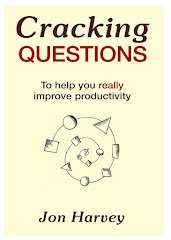The day was one of series organised by ITW. If you are not already signed up to be part of this network (or the several others that ITW have put together...) what is stopping you? It is free for people from the public sector, and becoming a private sector partner is well worth your investment.
It was also a delight to work alongside my daughter, Jess on that day too. She took the answers to three 'zero challenge'* questions and turned them into a themed visual presentation. The questions were:
- What must we learn from the past: what should we now stop, start and carry on doing?
- If the future is nothing else, we must make sure that it… what?
- In order to sweat our existing assets and capacity, we really should… what?
And this is what Jess produced.
(I have also uploaded a 7Mb version of this to my google drive, if you want to access that.)
I may be biased of course, but I think this picture neatly and beautifully summarises many of the challenges ahead as local services grapple with how to make digital working far more than just uploading existing forms onto the net (!)
So if you are a public sector person looking to network around some core issues, you can contact ITW here. And if you are from the private sector, please get in touch via this page. And if you looking for a Visual Communication Artist, Photographer & Project Manager then you can contact Jess via this email contact.
*Re 'zero challenge': this is something I have designed to fit into a day which is already jam packed with inputs & workshops. It provides a still moment of reflection, prompted by some critical questions designed to generate some useful insights from the participants at the very outset. It also helps the participants focus in on the day itself.










.jpg)


